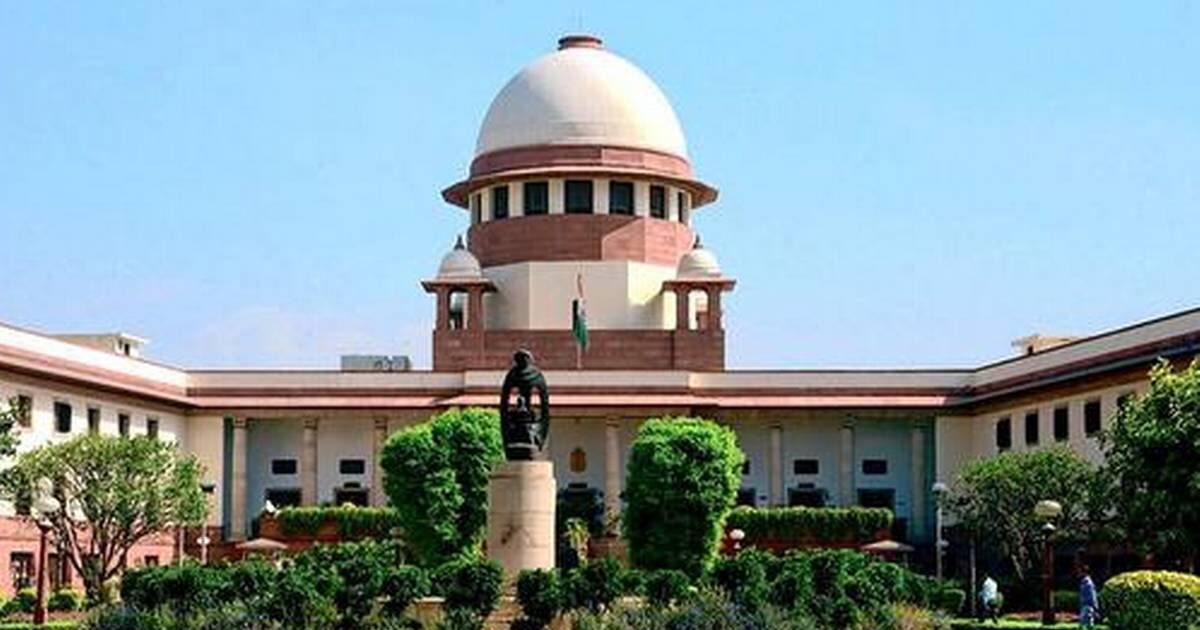
New Delhi: The Supreme Court directed on Friday that each protected forest such as national parks and wildlife sanctuaries must have an Eco-Sensitive Zone (ESZ) of one kilometre and banned mining activities within such parks across the nation.
Issuing a slew of directions, a bench headed by Justice L Nageswara Rao said that ‘the role of the State cannot be confined to that of a facilitator or generator of economic activities for immediate upliftment of the fortunes of the state’. ‘The State also has to act as a trustee for the benefit of the general public in relation to the natural resources so that sustainable development can be achieved in the long term. Such role of the State is more relevant today, than, possibly, at any point of time in history with the threat of climate catastrophe resulting from global warming looming large’.., it said
The bench, also comprising justices B R Gavai and Aniruddha Bose, ordered that no permanent structure will be allowed within such ESZ and said if the local law or other rules provide for an ESZ of more than one kilometre then the earlier provision would continue to apply. ‘Each protected forest, that is national park or wildlife sanctuary must have an ESZ of a minimum one kilometre measured from the demarcated boundary of such protected forest in which the activities proscribed and prescribed in the Guidelines of 9th February 2011 shall be strictly adhered to’, it said. Writing a 66-page order for the bench, Justice Bose, however, held that for Jamua Ramgarh wildlife sanctuary of Rajasthan, the ESZ shall be 500 metres so far as subsisting activities are concerned.
The apex court order came on a batch of applications filed in a pending PIL of 1995 and they raised two sets of issues. The first one was related to mining activities in and around Jamua Ramgarh, a wildlife sanctuary in Rajasthan. The second set of issues was related to prescribing ecosensitive zones (ESZ) surrounding the wildlife sanctuaries and national parks. While fixing the one kilometre range of ESZ to prohibit the mining activities near national parks, the bench was of the view that there cannot have ‘uniform Guidelines’ in respect of each sanctuary or national park for maintaining ESZ. ‘In the event, however, the ESZ is already prescribed as per law that goes beyond one kilometre buffer zone, the wider margin as ESZ shall prevail. If such a wider buffer zone beyond one kilometre is proposed under any statutory instrument for a particular national park or wildlife sanctuary awaiting a final decision in that regard, then till such final decision is taken, the ESZ covering the area beyond one kilometre as proposed shall be maintained,’ it ordered.
The Principal Chief Conservator of Forests, also the Home Secretary of each state and the UTs shall remain responsible for proper compliance with the guidelines as regards nature of use within the ESZ of all national parks and sanctuaries, it said. ‘The Principal Chief Conservator of Forests for each State and Union Territory shall also arrange to make a list of subsisting structures and other relevant details within the respective ESZs forthwith and a report shall be furnished before this Court by the Principal Chief Conservator of Forests of each State and Union Territory within a period of three months’, it said.
For this, such authorities are entitled to take assistance from governmental Agencies for satellite imaging or photography using drones, it said, adding, ‘Mining within the national parks and wildlife sanctuaries shall not be permitted’. It said if any mining or other activities are already being undertaken within the one kilometre or extended buffer zone (ESZ) of any wildlife sanctuary or national park then such activities may continue with permission of the Principal Chief Conservator of Forests of that state or UT. ‘The minimum width of the ESZ may be diluted in the overwhelming public interest but for that purpose, the State or Union Territory concerned shall approach the CEC and MoEF …and both these bodies shall give their respective opinions/recommendations before this Court. On that basis, this Court shall pass appropriate order’, it said.
With regard to rampant illegal mining activities within the Jamua Ramgarh sanctuary in Rajasthan, it said that ‘the CEC shall quantify the compensation to be recovered from each miner indulging in mining activities’ within the sanctuary in violation of any statutory provision or order of this court. ‘Specific recommendations for compensatory afforestation, reclamation, clearing overburden dumping as compensation in monetary units for degradation of forest resources shall also be made. A further set of recommendations concerning confiscation of earth moving equipment and other machineries lying within or in the periphery of the said sanctuary shall be made by the CEC’, it said. Recommendations shall be made within a period of four months before this court in the form of an application by the CEC, it said.
The top court also requested the CJI to consider a joint hearing of two separate PILs – ‘In Re: T.N. Godavarman Thirumulpad v. Union of India and Goa Foundation v. Union of India’ – on the ground that there are ‘certain overlapping issues involved’ in the pleas. The PIL by T N Godavarman Thirumulpad was filed in 1995 to ensure the preservation of forest resources of this country in balance with economic activities.

Post Your Comments